Nexter Ammunition: An Inside Look
The Simmel Difesa Colleferro plant has significant back-up capacity and can be used by the Nexter ABG group if it is necessary to increase production
After buying Belgian Mecar and Italian Simmel Difesa in the spring of 2014, Nexter set up its Ammunition Business Group (ABG) business group. Led by the chairman of the board of directors Jean-Patrick Baye, deputy managing director of the Nexter Group, the steering committee includes three managing directors of its subsidiaries, Nexter Munitions and the aforementioned Belgian and Italian companies, and four directors: marketing, finance, strategy and procurement.
The board of directors, headed by the chairman, meets once a month and discusses policies aimed at improving the performance of the ABG group. “Each legal entity maintains its status as a separate economic entity,” says Baile. “Nexter Munitions is determined to be the champion for automated manufacturing thanks to large investments in robotization, while the other two firms are more flexible, and their adaptability in research and development activities allows them to better respond to market demands.” Applying the best practical concepts, the ABG management intends to use the strengths of each unit in order to complement each other’s experience and competencies and best suit the needs of customers. Portfolio integration is clearly visible in the new catalog, in which ammunition is listed by characteristics, and not by structural units. Nexter ABG can supply almost all types of ammunition for ground, air and sea applications from 20 mm to 155 mm. It is worth noting that there are very few duplicate functions in the group, whereas the goal of a commercial service consisting of approximately 20 people in three subsidiaries is to streamline the process when using appropriate market mechanisms. Nexter ABG focuses on system development capabilities, which are based on the correct formulation of requirements for design, development, qualification, production preparation, product release and recycling, which also provide for comprehensive service throughout the product life cycle. Investments in the research and development of the Nexter ABG group average around 6-7 percent of turnover, which for 2015 a year amounted to approximately 430 billion euros (17 percent more compared to the turnover of 2014 of the year). The group’s business plan is based on a five-year period.
Nexter company to show their capabilities in the field of production of ammunition organized a press tour of its production. Beginning with a tour of the Simmel Difesa plant in Collefero, the group of excursionists moved to the Nexter Munitions plant in the city of La Chapelle San Urson, then moved to the Mecar plant in Nivelles, after which the visit ended with a demonstration of shooting at the Alkocete shooting range in Portugal.
Founded in 1912, Simmel Difesa at the end of 2000 experienced the precarious position of the ammunition industry, but the purchase by the Nexter Group helped it stay afloat and gave a new impetus to development. Additional investments allowed to increase productivity, increase the number of new and accelerate the implementation of existing programs, and, moreover, new modern products appeared in the company's portfolio and the group as a whole. For Nexter, the acquisition of Simmel Difesa had a definite, distinct interest. This, for example, high productivity and large storage capacity and its very good market position in the naval sphere. Another interesting element that was not initially considered was the Simmel plant for the disposal of ammunition, which allowed these new features to be added to the integrated capabilities of the group of companies.
Among the three companies that the Nexter ABG group unites, Nexter Munitions is one of the most well-equipped in terms of high-volume production.
Simmel Difesa's bestsellers are definitely projectiles for 40, 76 and 127 ship guns mm. Several new shells are being developed and they will soon appear on the market. It is worth starting, probably, with the smallest caliber. Here, thanks to its capabilities in designing and manufacturing fuses, Simmel Difesa offers a multifunction fuse for 40-mm projectiles designed for 40L70 guns. In order for the shooter to choose the most effective target operating modes depending on the type, the Simmel Difesa fuses use a wireless and contactless radio frequency programmable system. In addition to the point detonation mode and the mode set for a specific time, the new fuse can be programmed in a typical remote mode or in a controlled remote mode, when, for example, it becomes active only if the programmed detonation distance is close to the enemy target, while detonation does not occur during flight near a friendly facility. It also has high resistance to electromagnetic radiation and reflected signals from the earth or water. The new fuse enhances the striking effect of the PFF-C projectile (pre-formed fragmented cube) developed by the same company, which is equipped with ready-made striking elements in the form of tungsten cubes of unbreakable size. The new fuse was tested when firing cannon from Oto Melara and now Simmel Difesa is negotiating with the Far Eastern companies to integrate their programming device into other 40-mm weapon systems.
We pass to larger calibers. The 76L62 ammunition line has received new members in the form of shells with insensitive explosive (IM), propellant like LOVA (low vulnerability - low vulnerability) and high environmental safety. In its version of IM, a high-explosive pre-fragmented shell - one of the company's best sellers - passed factory qualification tests at the end of 2015, and in mid-2016 qualification tests were conducted in Italian navy. In the IM version, a projectile containing more than 1,55 kg of tungsten cubes is equipped with approximately 750 grams of a low-sensitivity explosive developed by Simmel Difesa, known under the designation ECF-1, which is not inferior in performance to other compounds or even surpasses them. It should be noted that the characteristics of the ammunition of the entire 76L62IM family exceed the requirements of the STANAG 4439 IM standard, especially with regard to detonation from a detonating wave and bullet hit. With integrated dual-mode fuses, ammunition with a self-destruction function can be used in air defense missions in remote or instant action modes, as well as for shelling the coast using the approach function to the ground. The 76L62 HE PFF (preformed fragments) is compatible with all 76/62 mm guns, starting with the MK75 and ending with Super Rapido. Simmel Difesa also enhanced the performance of its 76mm HE-SAP projectile (High Explosive-Semi Armor Piercing), increasing its effectiveness at high viewing angles thanks to the anti-ricochet system and improved combat charge. Low-sensitive, low-vulnerability, environmentally friendly technologies also extend to the 127 mm ammunition family; Simmel Difesa has planned to start testing the 2016 mm HE PFF IM high-explosive fragmentation projectile in 127 in order to launch it next year.
Ammunition for naval artillery, for example for 40-mm guns 40L70, are the main products of Simmel Difesa; new types of shells are currently qualifying
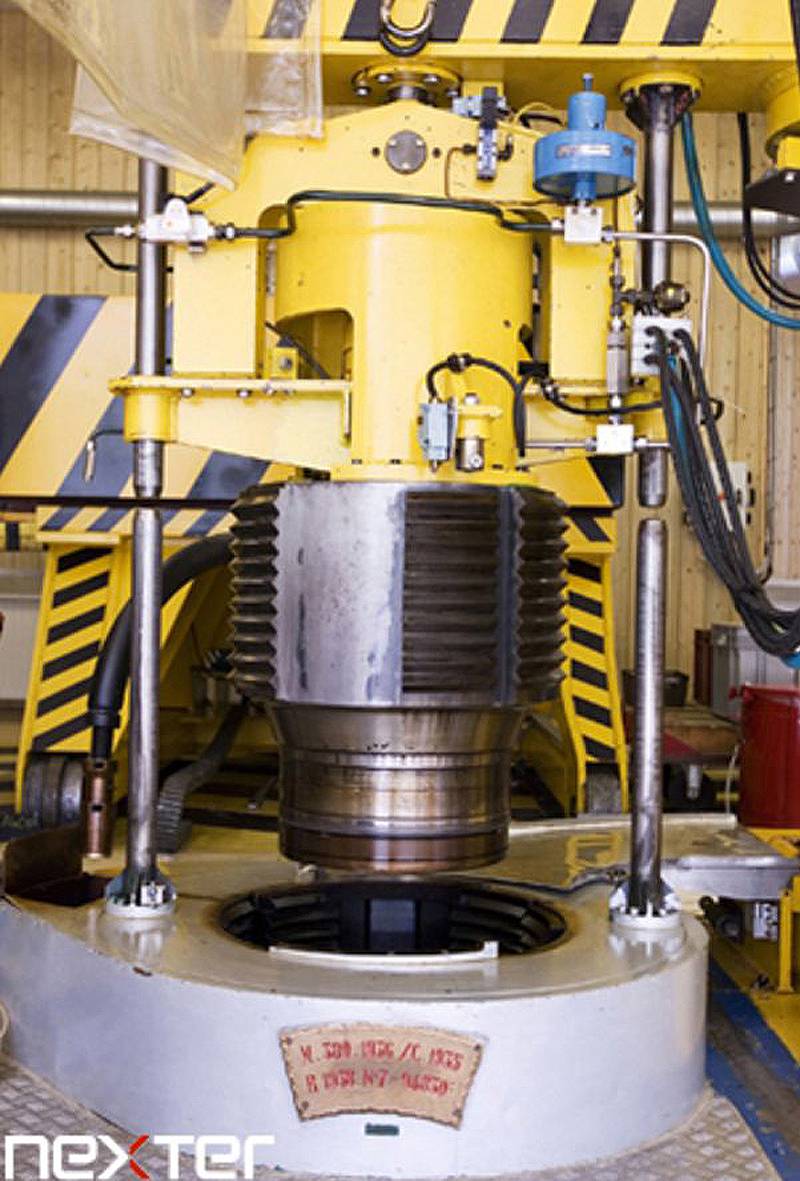
An isostatic pressing is carried out at the plant of Nexter Munitions to study the breech of large-caliber guns from an old warship of the French fleet.
For ground-based systems, Simmel Difesa has recently developed a new dual-purpose high-explosive fragmentation 40x46 mm projectile with a low initial velocity and self-destruct function. It is able to penetrate 70 mm rolled homogeneous armor and has a radius of destruction of more than 10 meters, and the pressure distribution at the time of the shot allows to increase the service life of the gun barrel. He passed the tests of the British Ministry of Defense and is currently in the final qualification stage of the Italian army. By the way, the British Defense Ministry is a major customer, ordering a large batch of 81-mm lighting mortar rounds. Simmel Difesa has now supplemented its 81-mm and 120-mm mortar shells with high-explosive fragmentation options.
As already noted, Simmel Difesa owns a factory for the disposal of ammunition in the town of Anani, 20 km from Collefero. This plant can neutralize large amounts of ammunition and explosive materials, ranging from bullets for small weapons and ending with artillery shells of 203 mm caliber, as well as hand grenades, aviation bombs, mortar shells, land and underwater mines, missiles, and dispose of the resulting by-products. The available equipment allows you to perform all stages of production: unpacking, disassembling, removing and inerting ignition devices, removing fuses, disassembling warheads, cutting and stockpiling shells and explosives in rotary or tunnel furnaces, and also neutralizing waste. As for explosives, some part can be reused for civilian purposes, while scrap metal after remelting can again fall into the production cycle in accordance with the three R (Recovery, Re-use, Recycle - recover, reuse, reuse into turnover). Collaboration was established between the experts on supplies and ammunition developers in order to solve the problems of demilitarization, starting with the design stage of the ammunition.
As for Nexter Munitions, the latest products were presented in its showroom near the city of Bourges - this is a 40-mm telescopic ammunition produced for CTA International, and a trajectory correction system for Spacido field artillery, whose qualification was completed in mid-2016. The latter system has already been demonstrated to some potential buyers, at least one of them from the Middle East. Although Spacido is offered for 155mm and 105mm grenades, there is evidence that its development for smaller calibers may be delayed. Questions about new programs that are currently in the development stage remained unanswered, all new initiatives remain under the veil of secrecy. However, it is clear that the research department is very active in the field of artillery and tank ammunition. In the field of artillery ammunition, the MPM program is in full swing, its new stage is already receiving funding from the Ministry of Defense. Within its framework, a high-precision guided 155-mm projectile with an increased range is being developed, which is apparently available at the moment as a prototype. As for the tank sphere, it seems that 120 mm ammunition has good prospects. Previously, Nexter Munitions developed a line of ammunition for the Leclerc main battle tank (MBT), but after the merger with the German KMW (whose Leopard 2 tank is arguably the most successful western MBT), its chances of increasing its market share in the 120mm round have grown significantly; the company has already set its sights on qualifying the available ammunition for a German tank.
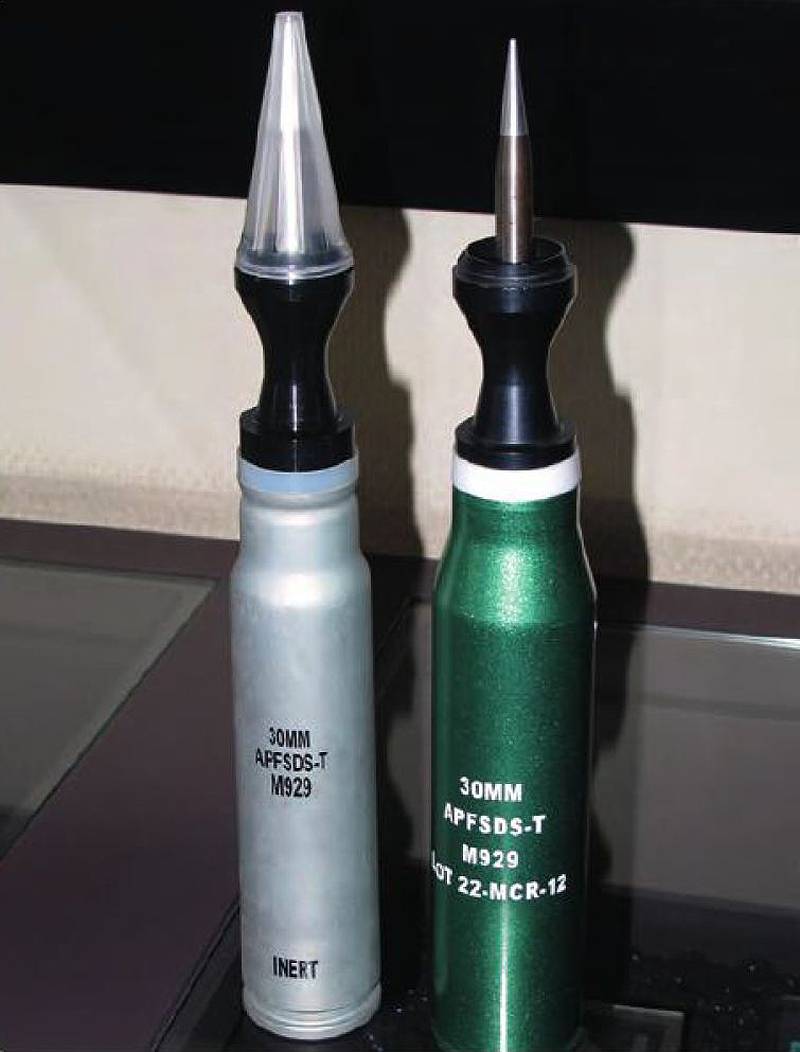
The Mecar armor-piercing sub-caliber 30-mm projectile is in the final stage of development and will be available first for the Mk44 cannon, and then for the Russian 2A72 cannon
Nexter Munitions recently opened a new medium-caliber liner plant in which a lot of money was invested. The reason for its launch was the expansion of the intake of medium-caliber ammunition: in the 2007, about 200000 shells were fired, and in 2013 and 2014 years, 600000-700000 shells were manufactured. These volumes exceeded the production capacity of the plant in Bourges, which produced about 2000 shells per day. It is worth noting that in order to reduce the cost, Nexter Munitions chose the use of brass sleeves instead of steel. The liners were previously manufactured at two main sites, and therefore it was very problematic to establish economical production due to large distances, since the liner in the manufacturing process went from one machine to another in the order of 1600 meters. Thus, a completely new production system was introduced, the latest equipment is being set up and tested, and the plant’s full readiness for production is planned for 2016 year.
All the production of medium-caliber sleeves is now concentrated in one building, each sleeve goes through the entire production cycle of no more than 600 meters. This circumstance along with the capabilities of the purchased new equipment allows you to maintain high quality products, reduce costs and increase production volumes. The company has set itself the goal of producing one million sleeves per year, which means an increase in production from the current 2000 sleeves per day to 5000 sleeves per day. This plant is capable of producing the liner for 20x139 mm projectiles used in naval gun Narwhal, for 25x137 mm shells used for firing from a gun BMP 8x8 VBCI, for 30x113 mm projectile gun assault helicopter Tiger and fighter Mirage 2000, and finally for 30x150 projectiles mm, which is firing gun Rafale fighter. The multi-operation surface treatment center was installed in the center of the building, since for the weight of the liner manufacturing cycle it is necessary to process eight times. At the moment, all the machines and equipment needed for other manufacturing processes are already installed in the building; among them equipment for heat treatment, which allows to produce 6000 sleeves in two shifts. The old surface treatment equipment is waiting for the qualification of the new line before its “retirement”, some machines are waiting for the release of space and its relocation. Among them, the new test facility, which will replace the seven separate installations currently used for final testing, will double the performance.
30-mm gun DEFA 791 fighter Rafale
The entire new line will be installed by the end of 2016. The Nexter ABG Group is planning to invest heavily in launching the production of new 40 mm caliber telescopic munitions for the CTA cannon selected for the French Jaguar 6xXNNXX armored vehicle, included in the Scorpion program, and for the British Ajax tracked vehicle. Ammunition for CTA will be produced jointly by Nexter ABG and BAE Systems UK. In Great Britain and France assembly lines are organized for their production.
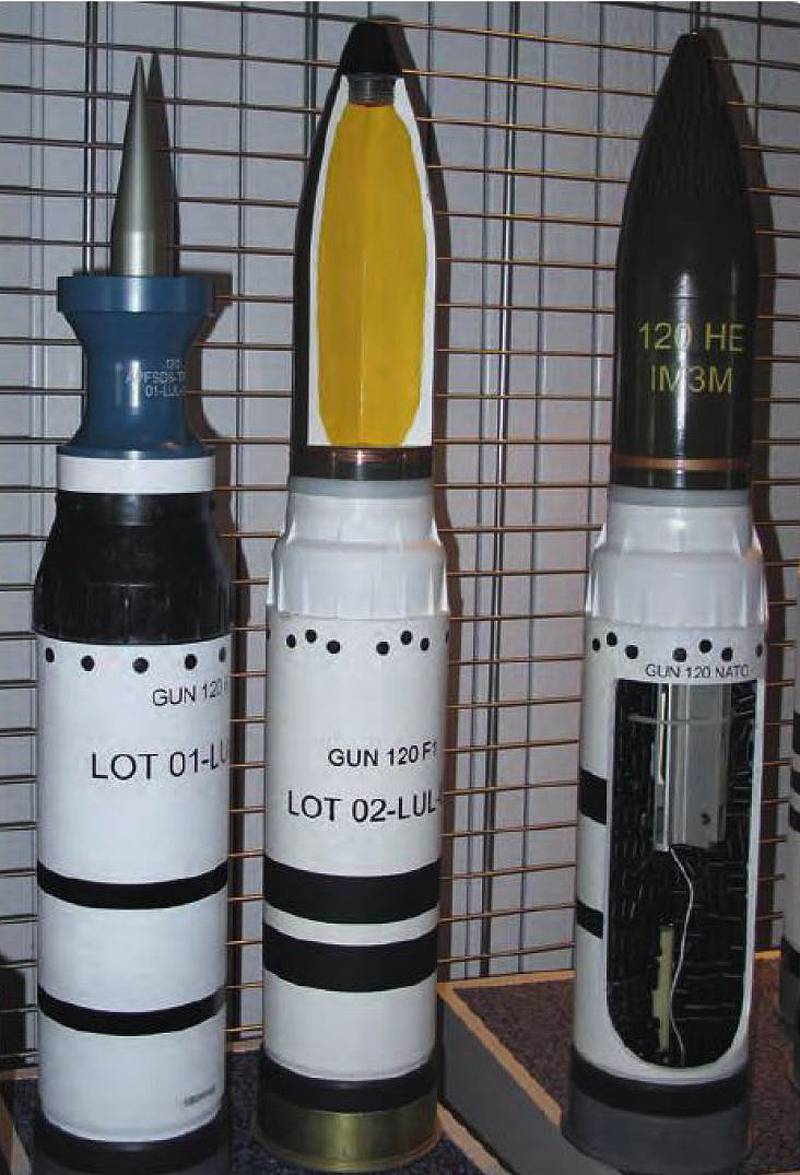
The merger with the German Krauss-Maffei Wegman will allow the company Nexter Munitions to enter new markets for tank 120-mm shells
With 400 headcount, Mecar is the third pillar of the Nexter ABG business group, adding flexibility to the general and large caliber ammunition for direct fire, especially when the order book is all right. Located near Brussels on a relatively small area, the company is completely independent in the production of components. In 2015, seven million euros were invested in the equipment, new CNC machines were installed at the machining site, as well as on the lines of equipment, assembly and packaging of armor-piercing and high-explosive ordnance. Some of the shells produced are designed to enhance the capabilities of existing weapons systems, such as Scorpion light tanks armed with 76-mm cannons, as well as recoilless cannons, such as the 106-mm M40A1. In the field of kinetic shells, Mecar collaborates with specialized companies, such as Cime Bocuze and Kennametal, to research new breakthrough materials, mostly to improve the characteristics of tungsten cores. They are used not only in MBT guns (the company is currently the largest manufacturer of 105-mm ammunition), but also in medium-caliber automatic guns. In this sector, one of the latest developments is the 30x165 mm armor-piercing projectile for 2A42 and 2A72 guns, intended for the BMP-2 and BMP-3 operating countries, including Finland, the United Arab Emirates, Kuwait and India. The core is a direct modification of the core of the 30x173 mm projectile designed for the Mk44 ATK cannon, while the sleeve is not aluminum, but steel, while the reduced volume means a decrease in the initial velocity from 1400 m / s to 1275 m / s. According to Mecar’s engineers, this projectile has twice the armor penetration rate compared to Russian projectiles, since this country is lagging behind Western countries in the technology of tungsten cores. Comparative tests of shells with aluminum sleeves for the Mk44 cannon were conducted in November 2015 of the year, similar tests for ammunition with steel shells were carried out in January of the 2016 year, while the option for Russian cannons is still at the development stage.
X-ray inspection at the Mecar plant; Depending on the stage of production, sample inspection or comprehensive inspection is carried out.
In addition to armor-piercing shells, Mecar also specializes in armor-piercing high-explosive shells with a crushable HESH (High Explosive Squash Head), which was once used on tanks, and now mainly on underground fortifications and other static objects. At the moment, two such projectiles are being developed: one of the 90 mm caliber is designed for the CMI Mk8 medium-pressure rifled gun, and the second for the 120-mm smoothbore gun is standard for Western MBT. The fuses for them will be refined from the fuses installed in the projectiles of smaller caliber. The company in its arsenal has a press on 350 tons, which allows you to get a higher density of equipped explosives of these projectiles compared to most competitors. The Mk8 projectile has already passed its tests, and the 120-mm projectile must be ready for demonstration tests at the end of the 2016 year. Currently, ballistic tests are being conducted, while static tests of the warhead have already been completed. In the past, shell shells of the HESH / HEP type (armor-piercing-high-explosive) were manufactured using the so-called cold-drawing method. It consisted of two stages: in the first, the billet in the form of a pipe was pressed by a reverse method, then the ogival part was made by the method of radial drawing. This process, although effective for mass production, created a dynamic imbalance that reduced the accuracy of the projectile. In order to consistently increase the accuracy, all modern Mecar HESH shells have a mechanically machined hull that guarantees the best dynamic balance: the 105 HESH projectile showed a standard deviation of 0,15-0,17 per kilometer range. The projectile not only has a stronger nose, the heat treatment of the front part of the body allows to increase the strength of the ogival segment, ensuring good impact of the crushed part on the machines of the average level of the reservation while ensuring sufficient penetration of the concrete wall before the blasting. The shell has excellent concrete-breaking characteristics due to the special bottom fuse: the blast wave and fragments, cutting steel rods in the concrete provide the formation of the necessary holes. At the initial stage, 120-mm projectiles, developed in collaboration with Orbital ATK from the United States, which is responsible for propellant charge and stabilization, will be equipped with Comp A3 explosive, it is cheaper to test. However, an experimental batch and serial shells will be equipped with a low-sensitivity explosive. The availability of a HESH projectile for the 120-mm smoothbore gun will expand the combat capabilities of many MBTs; this projectile is significantly cheaper than universal projectiles, which are currently forced to be used for making passes. According to Mecar experts, the rotation of projectiles fired from rifled guns and those fired from smooth-bore guns has a minimal effect on the characteristics of HESH projectiles.
Mecar not only deals with the qualification of a new inert 120-mm mortar shell, but also developed solutions for government-launched mortar loading bombs, such as the Finnish Nemo mortar tower. A customer from the Middle East recently installed Nemo towers on their high-speed patrol boats, thus becoming the first naval customer for Mecar, which has always specialized in land ammunition. Insensitive 81-mm and 60-mm mortar ammunition will not be ignored either. In addition, Mecar is looking forward to the future and therefore works, for example, on nanotechnology, aiming at the production of nano-aluminum powder to be added to explosives, since a large contact surface allows for an increase in the power of the blast wave. Mecar also develops tank shells with a flammable sleeve for low and high pressure 105 mm and 90 mm guns; The 105-mm version must be completed at the end of the 2016 of the year, then similar technology will be used in the 2017 year for the 90-mm version.
Materials used:
www.shephardmedia.com
www.nexter-group.fr
www.mecar.be
www.wikipedia.org
en.wikipedia.org
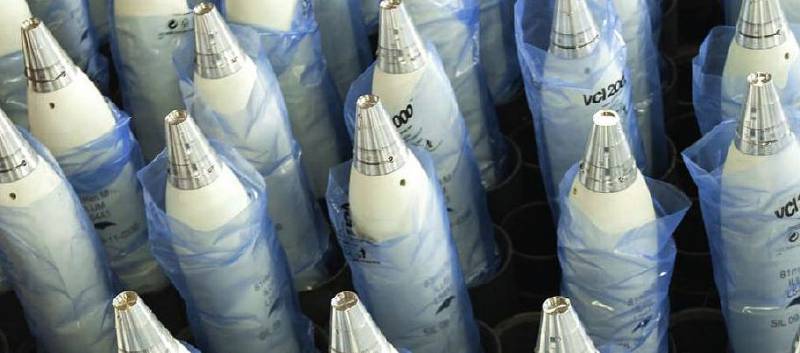


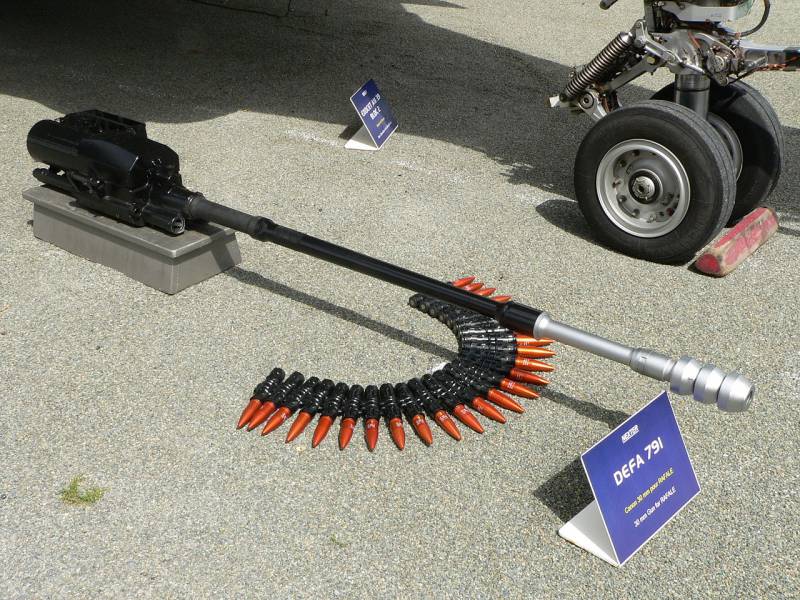
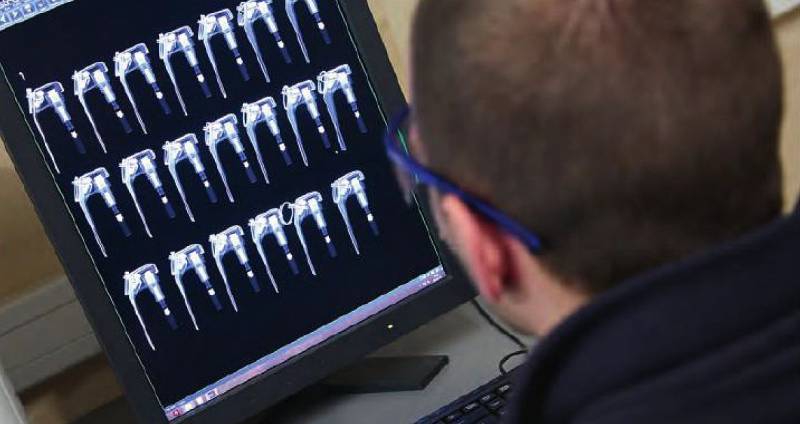
Information